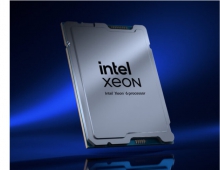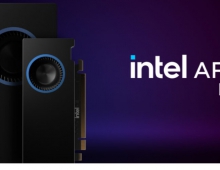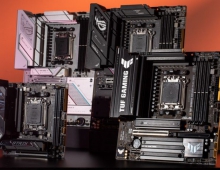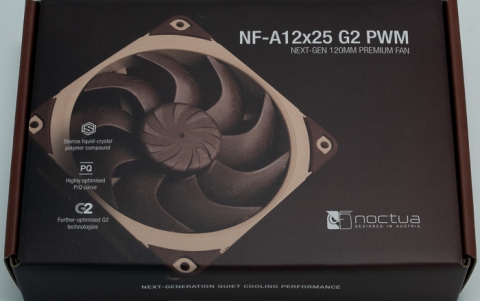
Intel Develops CMOS Radio Supporting All Flavors of the 802.11 Standard
Intel announced it has developed a prototype of an all-CMOS direct conversion dual-band radio transceiver capable of supporting every current Wi-Fi standards!
The system-in-a-package technology is a significant step toward enabling integrated CMOS radios that could provide improved wireless capabilities in future Intel platforms at a low cost.
The announcement, presented as part of a technical paper delivered at the Symposium on VLSI Technology in Kyoto, Japan, outlines the building blocks Intel created to implement the fully flexible, multimode radio in a standard CMOS process. A future extension to the Wi-Fi standard, 802.11n will more than double the wireless transfer speed compared to today's implementation.
"This system-in-a-package design uses more low-voltage circuitry than we've ever used in the past, which means we can integrate it and make it lower cost while operating at lower voltages and providing longer battery life," noted Krishnamurthy Soumyanath, director of Intel's Communications Circuits Research Lab. "The variable bandwidth of this solution extends capabilities beyond today's 20 MHz to 100 MHz, and is expected to support data rates higher than 100 megabits per second that should allow people to enjoy multiple high-quality video streams concurrently."
Today each device uses a customized radio to connect to a particular network -- for example, a wireless local area network or WLAN based on Wi-Fi technology. A different device might use a radio developed for a wireless wide area network or WWAN. In the next few years, Intel expects mobile devices will contain several different radios so they can utilize many different wireless communication networks. Intel's research points toward a time in the future when one device will use "smart" antenna systems and a reconfigurable CMOS radio on a single device making the radio more power efficient, smaller and lower cost. The goal being pursued is the ability to connect to any network, anytime, anywhere on any device.
One of the key achievements of this research is keeping the underlying manufacturing technology tied to CMOS -- the technology Intel uses to make all its microprocessors and other computer chips. By doing so, it keeps manufacturing costs low and the potential to produce this capability in high volume. The device in the research paper features a 1.4-volt design (very low power consumption compared to what is available in the marketplace today).
"By creating this capability in CMOS, Intel will have the option of integrating wireless capabilities into a wide variety of our future chips," Soumyanath said.
Paper Details
The device in the research paper integrates a 5GHz CMOS power amplifier that meets all the spectral purity and non-interference requirements from the U.S. Federal Communications Commission (FCC), while frequency planning techniques minimize interference caused by the on-die amplifier. All these improvements result in better wireless performance. To achieve these results, Intel researchers developed a new calibration scheme for the transceiver to achieve high volume manufacturability. Separating receiver and transmitter effects has proven to be difficult in the past, but Intel's scheme is easy to implement and correctly separates the effects, improving yields and lowering the cost of these radios.
About the Symposium on VLSI Technology
The Symposium on VLSI Technology began in 1981 with the hope of offering the world's top technologists an opportunity to engage in an open exchange of ideas on what was quickly becoming a revolution in the world's industrial capability. Since then, the Symposium has been held annually and has grown to be one of the most prestigious technical conferences in the VLSI business. The Symposium on VLSI Technology has alternated each year between sites in US and Japan. In 1987, the first Symposium on VLSI Circuits was held. Its sponsors continue to be the IEEE Electron Devices Society and Solid-State Circuits Society, and the Japan Society of Applied Physics in cooperation with the Institute of Electronics, Information and Communication Engineers.
802.11 Standards for Wireless Technology
802.11 refers to a family of specifications developed by the IEEE for wireless LAN technology. 802.11 specifies an over-the-air interface between a wireless client and a base station or between two wireless clients.
802.11a -- an extension to the 802.11 standard that applies to wireless LANs and provides up to 54 Mbps in the 5GHz band.
802.11b -- an extension to the 802.11 standard that applies to wireless LANs and provides 11 Mbps transmission (with a fallback to 5.5, 2 and 1 Mbps) in the 2.4 GHz band.
802.11g -- an extension to the 802.11 standard that applies to wireless LANs and provides 54 Mbps in the 2.4 GHz band.
802.11n -- an extension to the 802.11 standard that in the future will increase the speed to more than 100 Mbit/s. As projected, 802.11n will also offer a better operating distance than current networks.
The announcement, presented as part of a technical paper delivered at the Symposium on VLSI Technology in Kyoto, Japan, outlines the building blocks Intel created to implement the fully flexible, multimode radio in a standard CMOS process. A future extension to the Wi-Fi standard, 802.11n will more than double the wireless transfer speed compared to today's implementation.
"This system-in-a-package design uses more low-voltage circuitry than we've ever used in the past, which means we can integrate it and make it lower cost while operating at lower voltages and providing longer battery life," noted Krishnamurthy Soumyanath, director of Intel's Communications Circuits Research Lab. "The variable bandwidth of this solution extends capabilities beyond today's 20 MHz to 100 MHz, and is expected to support data rates higher than 100 megabits per second that should allow people to enjoy multiple high-quality video streams concurrently."
Today each device uses a customized radio to connect to a particular network -- for example, a wireless local area network or WLAN based on Wi-Fi technology. A different device might use a radio developed for a wireless wide area network or WWAN. In the next few years, Intel expects mobile devices will contain several different radios so they can utilize many different wireless communication networks. Intel's research points toward a time in the future when one device will use "smart" antenna systems and a reconfigurable CMOS radio on a single device making the radio more power efficient, smaller and lower cost. The goal being pursued is the ability to connect to any network, anytime, anywhere on any device.
One of the key achievements of this research is keeping the underlying manufacturing technology tied to CMOS -- the technology Intel uses to make all its microprocessors and other computer chips. By doing so, it keeps manufacturing costs low and the potential to produce this capability in high volume. The device in the research paper features a 1.4-volt design (very low power consumption compared to what is available in the marketplace today).
"By creating this capability in CMOS, Intel will have the option of integrating wireless capabilities into a wide variety of our future chips," Soumyanath said.
Paper Details
The device in the research paper integrates a 5GHz CMOS power amplifier that meets all the spectral purity and non-interference requirements from the U.S. Federal Communications Commission (FCC), while frequency planning techniques minimize interference caused by the on-die amplifier. All these improvements result in better wireless performance. To achieve these results, Intel researchers developed a new calibration scheme for the transceiver to achieve high volume manufacturability. Separating receiver and transmitter effects has proven to be difficult in the past, but Intel's scheme is easy to implement and correctly separates the effects, improving yields and lowering the cost of these radios.
About the Symposium on VLSI Technology
The Symposium on VLSI Technology began in 1981 with the hope of offering the world's top technologists an opportunity to engage in an open exchange of ideas on what was quickly becoming a revolution in the world's industrial capability. Since then, the Symposium has been held annually and has grown to be one of the most prestigious technical conferences in the VLSI business. The Symposium on VLSI Technology has alternated each year between sites in US and Japan. In 1987, the first Symposium on VLSI Circuits was held. Its sponsors continue to be the IEEE Electron Devices Society and Solid-State Circuits Society, and the Japan Society of Applied Physics in cooperation with the Institute of Electronics, Information and Communication Engineers.
802.11 Standards for Wireless Technology
802.11 refers to a family of specifications developed by the IEEE for wireless LAN technology. 802.11 specifies an over-the-air interface between a wireless client and a base station or between two wireless clients.
802.11a -- an extension to the 802.11 standard that applies to wireless LANs and provides up to 54 Mbps in the 5GHz band.
802.11b -- an extension to the 802.11 standard that applies to wireless LANs and provides 11 Mbps transmission (with a fallback to 5.5, 2 and 1 Mbps) in the 2.4 GHz band.
802.11g -- an extension to the 802.11 standard that applies to wireless LANs and provides 54 Mbps in the 2.4 GHz band.
802.11n -- an extension to the 802.11 standard that in the future will increase the speed to more than 100 Mbit/s. As projected, 802.11n will also offer a better operating distance than current networks.





















